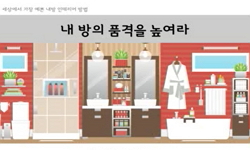(연구 배경 및 목적) 문화 산업과 디지털 전시 기술의 발전과 사람들의 체험 요구사항 변화에 따라, 박물관에서 전통적인 전시 방식은 관람객의 다양화된 체험 요구를 충족시키지 못하고 있...
http://chineseinput.net/에서 pinyin(병음)방식으로 중국어를 변환할 수 있습니다.
변환된 중국어를 복사하여 사용하시면 됩니다.
- 中文 을 입력하시려면 zhongwen을 입력하시고 space를누르시면됩니다.
- 北京 을 입력하시려면 beijing을 입력하시고 space를 누르시면 됩니다.

카노 모델을 활용한 박물관 전시 공간에서의 멀티모달 체험의 요구사항 연구 = A Study on the Requirements of Multimodal Experience in Museum Exhibition Spaces Using the Kano Model
한글로보기https://www.riss.kr/link?id=A109323385
- 저자
- 발행기관
- 학술지명
- 권호사항
-
발행연도
2024
-
작성언어
Korean
- 주제어
-
등재정보
KCI등재
-
자료형태
학술저널
- 발행기관 URL
-
수록면
587-600(14쪽)
- 제공처
-
0
상세조회 -
0
다운로드
부가정보
국문 초록 (Abstract)
(연구 배경 및 목적) 문화 산업과 디지털 전시 기술의 발전과 사람들의 체험 요구사항 변화에 따라, 박물관에서 전통적인 전시 방식은 관람객의 다양화된 체험 요구를 충족시키지 못하고 있다. 단조롭고 평면적인 전시 방식이 가져오는 참여감과 체험감 부족을 개선하기 위해 관람객의 체험 요구를 파악하고 해당 체험 디자인 전략을 수립해야 한다. 그러므로 본 연구는 박물관 전시 공간의 핵심 요소와 멀티모달 체험 특성을 기반으로 카노 모델(Kano model)을 활용하여 관람객의 멀티모달 체험 요구사항을 분석하여 해당 속성을 추출하고, 각 요구사항의 효용 가치를 분석하는 것을 목적으로 한다. (연구방법) 첫째, 선행연구를 통하여 박물관 전시 공간의 개념 및 핵심 요소를 도출하였다. 둘째, 멀티모달 체험을 파악하기 위하여 참고논문을 바탕으로 이론적 고찰을 진행하였으며 멀티모달 체험의 개념과 특성을 도출하고 요구사항을 추출하였다. 셋째, 선행연구를 통하여 카노 모델의 개념과 평가방식을 도출하여, 요구사항 평가 데이터를 수집하기 위하여 설문 조사를 실시하고, 카노 모델을 활용하여 속성에 따라 디자인 요구사항을 분류하였다. 넷째, 추출된 해당 디자인 요구사항을 분석하였고, 마지막으로 결론 및 제언을 제시하였다. (결과) 카노 모델을 활용한 분석 결과를 보면, 박물관 전시 공간에서의 멀티모달 체험 디자인 요구사항 중 필수적 속성으로는 다양한 정보, 인터랙티브 싱크로율, 정서감지가 포함된다. 일원적 속성으로는 모달 융합, 다감각 자극, 인지부하 관리가 포함되고, 매력적 속성으로는 정경 감지, 감각적 보완, 개별화 체험, 쾌속 반응, 동적 콘텐츠 적응이 포함된다. 그리고 지각적 다양성과 실시간 피드백은 카노 모델 분석 결과에서 무차별적 속성으로 판정되었다. (결론) 첫째, 박물관 전시 공간의 4개의 핵심 요소와 멀티모달 체험의 14개의 특성을 도출하였다. 그다음에 핵심 요소와 특성 간의 관련성을 근거로 매칭하여 요구사항을 제안하였다. 둘째, 카노 모델을 통하여 제안된 디자인 요구사항의 SI와 DSI 지수를 근거로 필수적 속성, 일원적 속성, 매력적 속성, 무차별적 속성으로 분류하였다. 셋째, 필수적 속성 > 일원적 속성 > 매력적 속성 > 무차별적 속성의 원칙을 기반으로, 멀티모달 체험을 적용한 박물관 전시 공간을 디자인할 때는 우선적으로 필수적 속성의 요구사항을 고려하고, 일원적 속성의 요구사항을 통하여 전시효과를 최적화한 후, 매력적 속성의 요구사항을 이용하여 관람객의 몰입감과 참여도를 강화해야 한다.
다국어 초록 (Multilingual Abstract)
(Background and Purpose) With the development of cultural industry and digital exhibition technology, along with the changing experiential demands of people, traditional exhibition methods in museums are no longer able to meet visitors’ diverse need...
(Background and Purpose) With the development of cultural industry and digital exhibition technology, along with the changing experiential demands of people, traditional exhibition methods in museums are no longer able to meet visitors’ diverse needs. To address the lack of engagement and immersive experiences caused by monotonous and flat exhibition approaches, it is necessary to understand visitors’ experiential needs and establish appropriate design strategies. Therefore, this study analyzes visitors’ multimodal experience requirements in museum exhibition spaces using the Kano model to extract relevant attributes and assess the utility value of each requirement based on the key elements of exhibition spaces and the characteristics of multimodal experiences. (Method) First, the concepts and key elements of museum exhibition spaces were identified through a review of previous studies. Second, to understand multimodal experiences, a theoretical review was conducted based on reference papers, leading to the extraction of the concepts and characteristics of multimodal experiences and their corresponding requirements. Third, the concept and evaluation methods of the Kano model were identified based on previous studies, followed by a survey to collect evaluation data for the requirements. The design requirements were then classified based on their attributes using the Kano model. Fourth, the extracted design requirements were analyzed, and finally, conclusions and recommendations were presented. (Results) According to an analysis using the Kano model, the essential attributes of multimodal experience design requirements in museum exhibition spaces include diversified information, interactive synchronization, and emotional perception. The one-dimensional attributes included modal fusion, multisensory stimulation, and cognitive load management. The attractive attributes include contextual perception, sensory complementarity, individualized experience, rapid response, and dynamic content adaptation. Perceptual diversity and real-time feedback were classified as indifferent attributes, based on the Kano model analysis results. (Conclusion) Four key elements of museum exhibition spaces and 14 characteristics of multimodal experiences were identified. Subsequently, based on the relationship between these key elements and their characteristics, requirements were matched and proposed. Second, using the Kano model, the proposed design requirements were classified into essential, one-dimensional, attractive, and indifferent attributes based on their SI and DSI indices. Third, following the principle of essential attributes > one-dimensional attributes > attractive attributes > indifferent attributes, essential attribute requirements should be prioritized when designing museum exhibition spaces that incorporate multimodal experiences. Subsequently, the exhibition effect should be optimized through one-dimensional attribute requirements, and visitor immersion and engagement should be enhanced using attractive attribute requirements.
동일학술지(권/호) 다른 논문
-
유니버설 디자인 이론에 따른 중국 도시 고속철도역 대합실의 적용성 평가 및 개선방안에 관한 연구
- 한국공간디자인학회
- 장자루이
- 2024
- KCI등재
-
- 한국공간디자인학회
- 박정아
- 2024
- KCI등재
-
- 한국공간디자인학회
- 김세련
- 2024
- KCI등재
-
무인 자율 자동차에 대한 긍·부정 유튜브 동영상의 시청자 인식 유형
- 한국공간디자인학회
- 손경덕
- 2024
- KCI등재




 KCI
KCI KISS
KISS






